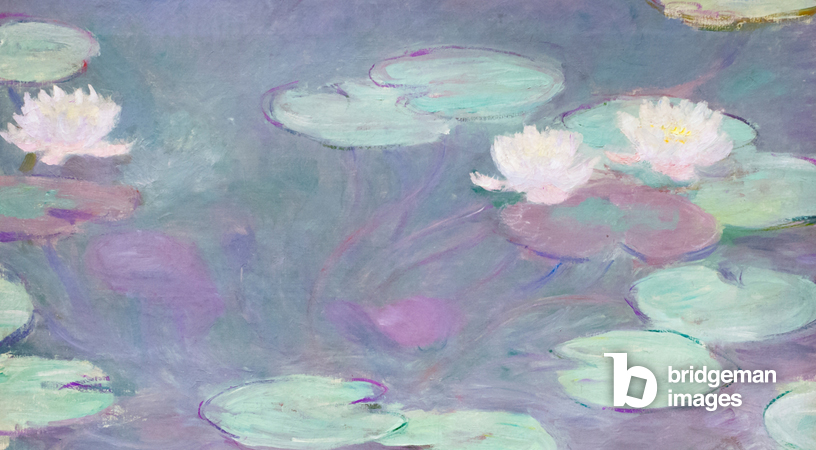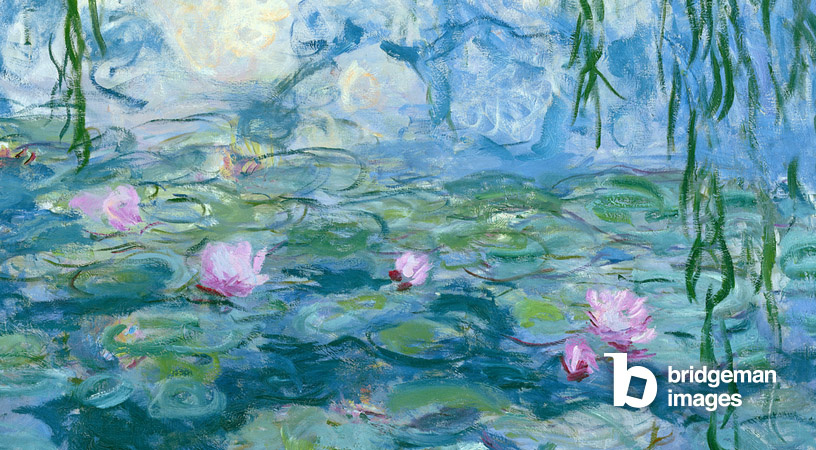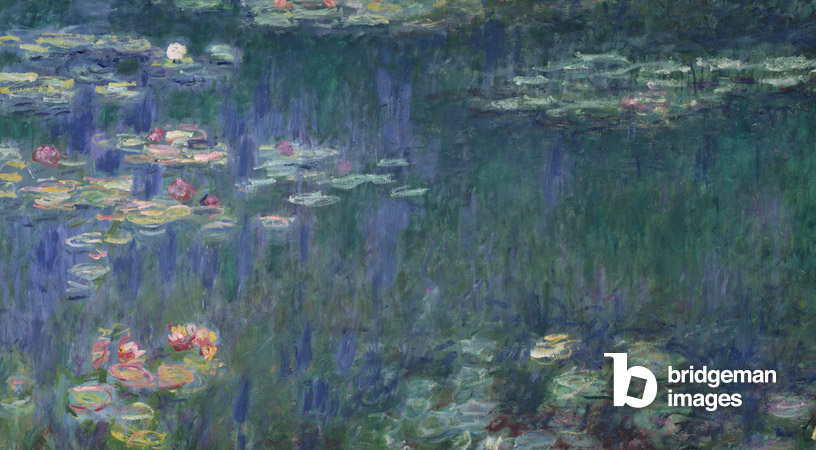Published 27/10/2023
Claude Monet's Water Lilies series is one of the most iconic and celebrated works of Impressionist art. Painted between 1896 and 1926, this monumental work depicts the artist's flower garden at his home in Giverny, France. The Water Lilies series includes around 250 oil paintings that capture the changing light and atmosphere of his garden. These meditative paintings of tranquil water lilies have become synonymous with Monet's pioneering artistic style and continue to inspire countless artists today.

Who Painted Water Lilies?
Water Lilies was created by the French Impressionist painter Oscar-Claude Monet. Monet was born in Paris in 1840 and became a leading figure in the Impressionist movement that emerged in the late 19th century. The Impressionists aimed to capture the fleeting effects of light and colour in nature, often painting en plein air. They used rapid, broken brushstrokes to suggest movement and create vibrancy. Monet was integral in developing Impressionism's radical approach to depicting natural scenes. His early works like Impression, Sunrise gave the movement its name. By the 1880s, Monet had achieved fame for his landscape paintings capturing atmospheres and transience. He became especially renowned for serial paintings of the same subject under different conditions like haystacks or Rouen Cathedral.
When Was Water Lilies Painted?
Monet painted the Water Lilies series from around 1896 to 1926 during the last 30 years of his life. He began painting water lilies in 1896 after purchasing a property with a pond and expansive gardens in Giverny. This tranquil environment became his primary subject for the rest of his career. Monet started by producing views incorporating the wooden Japanese bridge over the pond. From 1909, he increasingly focused on detailed close-ups of the water lilies themselves, presenting them as abstract colour compositions. Monet painted about 60 water lily paintings between 1914-1926. This final period saw him develop his epic, large-scale Water Lilies panels like the Museum of Modern Art's Reflections of Clouds on the Water-Lily Pond triptych. In these works, Monet dispensed with representation altogether in favour of pure abstraction.
Where Was Water Lilies Painted?
Monet produced the Water Lilies series entirely at his home in Giverny, France. After acquiring the property in 1883, Monet spent vast sums to reshape the garden and pond into a painterly oasis suited to his artistic tastes. He filled the gardens with flowering plants of diverse colours and textures which became his living studio. The water lily pond featured imported exotic specimens like Egyptian blue water lilies and South American rainforest varieties. The Japanese bridge spanning the pond became an iconic subject. Monet painted the evolving garden in all seasons and weather conditions. He worked outside en plein air, lugging canvases around the gardens to capture ephemeral effects. Later in life with reduced mobility, Monet painted inside a specially built studio with huge windows overlooking the water lilies.
Why is Water Lilies Famous?
Water Lilies is considered one of Monet's finest achievements and a landmark in the history of modern art. The series was groundbreaking in its focus on colour and abstraction over representation. The variations in light and atmosphere across the serial paintings inspired comparisons to music and meditation. Water Lilies essentially invented a new genre of large-scale decorative painting suited to abstract expression. The work was a radical departure from Monet's early, naturalistic Impressionist paintings. The dreamy, abstracted water lilies signalled a move toward the modernist styles that would dominate the 20th century. Water Lilies also cemented Monet's legacy as a master of serial painting. The work remains iconic as a soothing and poetic evocation of nature, light, and colour. Reproductions of Water Lilies have become hugely popular decorative images.
Water Lilies Painting Price
As one of the most celebrated Impressionist works, Water Lilies paintings have sold for extremely high prices at auction over the years. In 2021, Le Bassin Aux Nymphéas sold for over $70 million USD. In May 2019, Meules fetched $110 million, setting a new auction record for a Monet. Many of the large Water Lilies panels are housed in prestigious museum collections. In 1966, the Museum of Modern Art in New York acquired the 200-square-foot Water Lilies triptych for $2 million from Nelson Rockefeller’s collection, the highest price ever paid for a Monet at that time. Accounting for inflation, the triptych would be worth over $16 million today. Individual smaller paintings from the series periodically sell for $20 - $50 million at auction depending on size, date, and provenance.

How Long Did It Take to Paint Water Lilies?
Monet worked on the Water Lilies series for 30 years until his death in 1926 at age 86. He painted approximately 250 oil paintings as part of the series. The larger mural-sized panels took Monet several months each to complete. He worked on multiple canvases simultaneously, moving around the pond to portray the water lilies under different light during the day. As he aged, Monet increasingly painted inside the studio rather than around the gardens. The size and scope of the series was unprecedented and required an immense dedication spanning three decades. Monet essentially devoted the last third of his long career exclusively to painting his garden. His Water Lilies obsession was so all-consuming some questioned his sanity as he worked tirelessly on the endless variations. The series is considered the major crowning achievement of Monet's influential career as an Impressionist painter.
Artistic Techniques of Water Lilies
Monet utilised several innovative techniques in creating his Water Lilies paintings. He applied paint rapidly with loose, short brushstrokes to capture the shifting effects of light on the water. Often using unblended patches of colour, Monet conveyed a sense of immediacy and natural vision. He experimented extensively with layers of translucent paint and glazes to suggest reflections and create depth in the water. Thick layers of rippling paint evoked motion on the pond's surface. In later works, Monet employed thicker impasto brushwork using a palette knife to add texture and dimensional peaks of paint to form water lilies and foliage. He also used downward and sideways perspectives to immerse viewers in the pond, often cropping the composition to focus intimately on the water. These techniques evolved over the decades as Monet sought new ways to dissolve forms and render the interplay of light and water.
Themes and Meaning of Water Lilies
The Water Lilies series explores several recurring themes. The meditative, endless variations evoke a sense of timelessness and tranquillity. The flowers represent life, growth, and renewal as they sprout in the water against changing light. The cycle of dawn to dusk is referenced through the reflected colours and shadows. Monet also intended the dreamlike work to provide a reprieve from modern urban life through immersion in nature. The indistinct, abstract qualities suggest the limits of human visual perception, as forms dissolve into pure colour and light. While deeply personal, the work's contemplative themes have broad appeal. The paintings can be interpreted both as investigations of colour and light, and as potent symbols of nature, transience, and introspection.
Influence of Japanese Art on Water Lilies
Monet was strongly influenced by Japanese Ukiyo-e woodblock prints by artists like Hokusai. The Japanese bridge in the Water Lilies compositions increases the work's exotic, Far Eastern sensibility. Monet adopted Japanese principles like expressive use of colour over line, simplicity, and flattening of space. He mimicked the Japanese practice of serial paintings of the same subject to depict subtle variations in light and mood. The abstract focus and downward perspectives seen in the Water Lilies also parallel Japanese aesthetics to a degree. Monet's asymmetrical compositions, intimacy, and cropping are also borrowed from Japanese conventions. Overall, the Water Lilies series exhibits several direct formal and stylistic qualities adopted from Monet's vast collection of Japanese prints, which profoundly shaped his mature painting style. It’s quite a wonder to see.
Later Exhibition History of Water Lilies
Monet personally oversaw several exhibitions of his Water Lilies paintings during his later years. In 1909, he exhibited 12 large canvases at the Galerie Durand-Ruel in Paris. In 1912, he had a major solo exhibition of 48 Water Lily paintings at the same gallery. After Monet's death in 1926, major retrospectives helped cement the Water Lilies' iconic reputation. A landmark exhibition of Monet's works at the Musée de l’Orangerie in 1927 displayed the full frieze of the eight 2-meter-high Water Lilies murals specially designed by Monet for the space. The Museum of Modern Art's massive Monet retrospective exhibition in 1952 introduced the Water Lilies to America and drew over 125,000 visitors. Since then, the series continues to be exhibited globally, with a 2008 exhibition at the National Museum of Western Art in Tokyo attracting 660,000 visitors.
Where to View Monet’s Water Lilies Now
Monet's iconic Water Lilies series can be seen in renowned art museums across the world. Eight of the massive mural-sized panels are still permanently displayed in oval rooms at the Musée de l'Orangerie in Paris, installed there in 1927 shortly after Monet's death. The Museum of Modern Art in New York, the Art Institute of Chicago, the Saint Louis Art Museum, and the Carnegie Museum of Art in Pittsburgh are all home to individual Water Lilies canvases. The Metropolitan Museum of Art owns over 20 works from the series in its collection. Many paintings are held in European institutions like the National Museum of Western Art in Tokyo, the Museo Thyssen-Bornemisza in Madrid, and the National Gallery in London, which houses one of Monet's earliest water lily paintings from 1903. Smaller works can also be found in regional museums worldwide. Temporary exhibitions featuring the Water Lilies in full have been organised by galleries such as the Brooklyn Museum and National Gallery of Australia. The series can only be viewed comprehensively through sporadic major retrospectives of Monet's work.

Monet’s Legacy
Claude Monet has an enduring legacy as one of the most iconic and influential painters in the development of modern art. As a founding member of the Impressionist movement in the late 1800s, Monet spearheaded a revolutionary plein air painting style defined by loose brushwork, vivid colour, and an emphasis on capturing ephemeral light effects and atmospheres in nature. His early Impressionist works like Impression, Sunrise and the Haystacks series pioneered artistic techniques like broken brushstrokes, thick paint application, asymmetrical compositions, and unusual vantage points that came to characterise the new modern approach to painting.
Monet's obsessive, lifelong serial studies exploring variations in light and colour under different conditions established seminal methods for portraying the subjective visual experience that profoundly impacted later modernist abstraction. However, it was the artist's late-career Water Lilies series that cemented his reputation as a master of modern art. These 250 luminous, radically abstract panels dispensed with representation altogether in favour of pure colour, light, and atmosphere, inventing a meditative new genre of large-scale decorative painting suited to 20th century styles like abstract expressionism.
Monet transformed the possibilities of landscape painting through his innovative visual language. His legacy as the quintessential Impressionist endures today through the continued global popularity of his most iconic subjects – grain stacks, poplars, Rouen Cathedral, London fog, and water lilies. Museums, scholars, and the public remain fascinated by Monet's pioneering artistic vision and profound influence on subsequent generations of avant-garde painters.
Claude Monet's iconic Water Lilies series represents a pivotal moment in the development of modern art. The 250 luminous, meditative paintings depict Monet's own flower garden as an oasis removed from space and time. Captured in endless variations across three decades, the tranquil water lilies demonstrate Monet's groundbreaking visual language of colour and abstraction. Once a naturalistic Impressionist, Monet's intimate focus on atmosphere and light evolved into a completely new artistic style anticipating abstract expressionism. Widely celebrated for its dreamlike qualities, Water Lilies created an entirely original genre of large-scale decorative painting. The series cemented Monet's reputation as an undisputed master of serial painting dedicated to capturing nuanced effects of colour and light. Deeply influential and popularised through mass reproduction, Monet's Water Lilies remain an iconic highlight of Impressionism, inviting endless artistic contemplation.
View our selection of Impressionist works.


